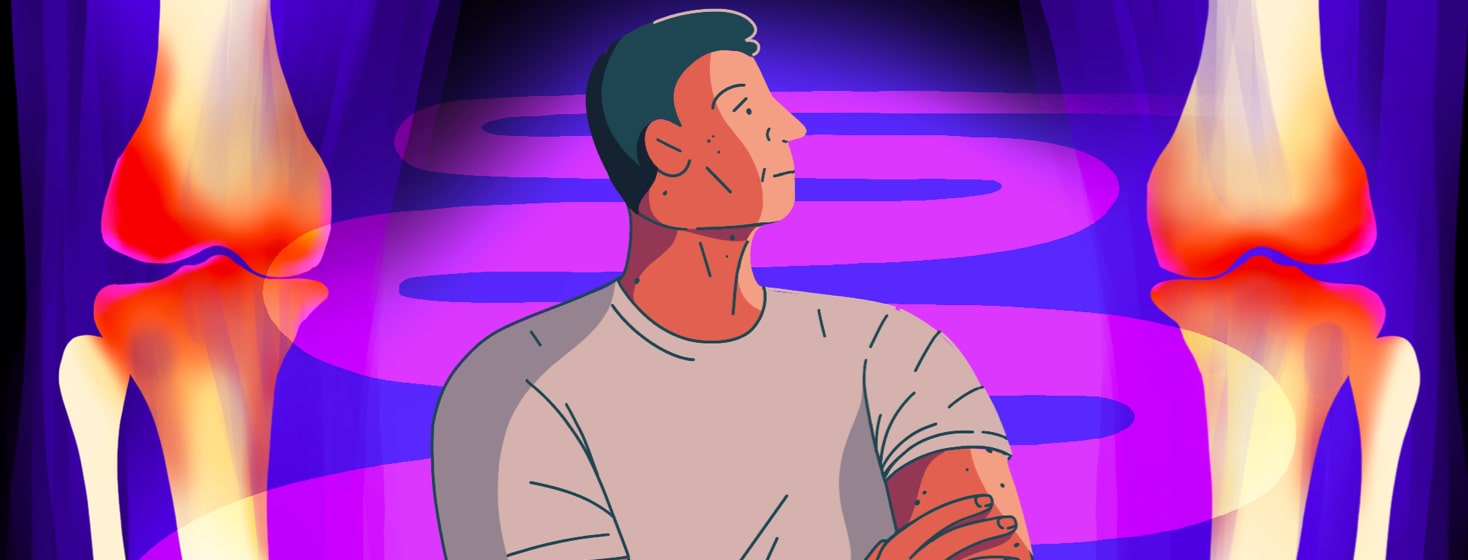Psoriatic Arthritis Prognosis and Quality of Life
Psoriatic arthritis (PsA) can cause serious pain, stiffness, and disability. It is a chronic condition without a cure, so the focus is on controlling symptoms and preventing joint damage. With treatment, people usually experience fluctuating periods of flares and remission.
People with PsA have a higher risk of developing other conditions, especially cardiovascular disease. This may slightly reduce life expectancy.
PsA has a negative effect on quality of life. Pain, fatigue, and an inability to carry out daily activities can place an emotional burden on people with PsA. With treatments and pain management, people with PsA can reduce the burden of the disease.
What is the prognosis for people with psoriatic arthritis?
There is no cure for psoriatic arthritis, but treatments can relieve symptoms, improve prognosis, and prevent permanent joint damage and disability. In some cases, treatments can lead to long-term remission. But it is more likely to experience disease flares alternating with periods of remission. More than half of people with PsA have at least 1 flare over 2 years.1,2
On average, joint damage progresses at a rate of about 1 peripheral joint every 2 years. Without treatment, people with PsA can have persistent inflammation, progressive joint damage, and severe physical limitations.1
More than half of people with PsA also have at least 1 other condition. The most common ones are heart disease, high blood pressure, gastrointestinal conditions, and chronic respiratory diseases. People with PsA also have a higher risk for osteoporosis (brittle bones) and inflammatory bowel disease.1
How does PsA affect life expectancy?
Some research suggests that people with PsA have a shorter life expectancy. This is probably because of other conditions associated with PsA. For example, people with PsA may have a higher risk of death from cardiovascular or respiratory disease.1,3
How does PsA impact quality of life?
People with PsA report lower scores on quality of life surveys. This may be due to pain, fatigue, skin problems, low functional capacity, sleep disturbance, or anxiety. PsA also causes a large economic burden because of hospital costs. People with PsA for at least 2 years have a 2-5 times higher risk of depression. Here are some aspects of life affected by PsA.4
Activities and social participation
PsA affects people’s ability to work and maintain social relationships. People with PsA have higher levels of unemployment and work disability. Women and people with worse physical functioning are most affected. In some studies, over 90 percent of people with PsA say they have a lower ability to work, volunteer, and participate in social events.4
Physical aspects
People with PsA have high levels of pain and functional disability. This reduces productivity and the ability to carry out daily tasks. Disability is usually due to joint damage, but can also be caused by skin disease. Pain is often ranked as the most important impact on people’s quality of life.4
Emotional aspects
People with PsA have a high risk of developing symptoms of anxiety and depression. This risk is higher than for people with psoriasis alone or rheumatoid arthritis. Depression and anxiety may reduce chances of remission and cause poor adherence to treatment plans. People with PsA often also experience other negative emotions, including fear, uncertainty, concern for the future, loss of motivation, embarrassment, and frustration.4
Fatigue
Almost half of people with PsA experience moderate fatigue, and about 30 percent experience severe fatigue. After pain, it is often ranked as the second most important impact on quality of life. Fatigue is mostly caused by physical disability, pain, and distress.4
Living with PsA
Living with PsA can be a challenge. But there are some ways to relieve symptoms, improve prognosis, and reduce the burden of psoriatic arthritis.
Exercise helps loosen joints and tendons and reduces inflammation and pain. It also can help reduce your chance of developing cardiovascular disease or other associated conditions. People with PsA often enjoy activities like walking, cycling, yoga, swimming, and tai chi. A physical therapist or fitness professional can help create an exercise routine that works for you.5
Managing pain with treatments can also prevent long-term damage to your joints. There are several treatment options, including NSAIDs, corticosteroid injections, DMARDs, and biologics. Some people with PsA also find relief from practices like massage, acupuncture, and meditation. Talk to your doctor about which treatments may work for you.5
Managing PsA while at work is also important. Having a discussion with your supervisor can help find strategies that benefit your health and your workplace. Assistive devices can also make daily tasks more comfortable.5

Join the conversation